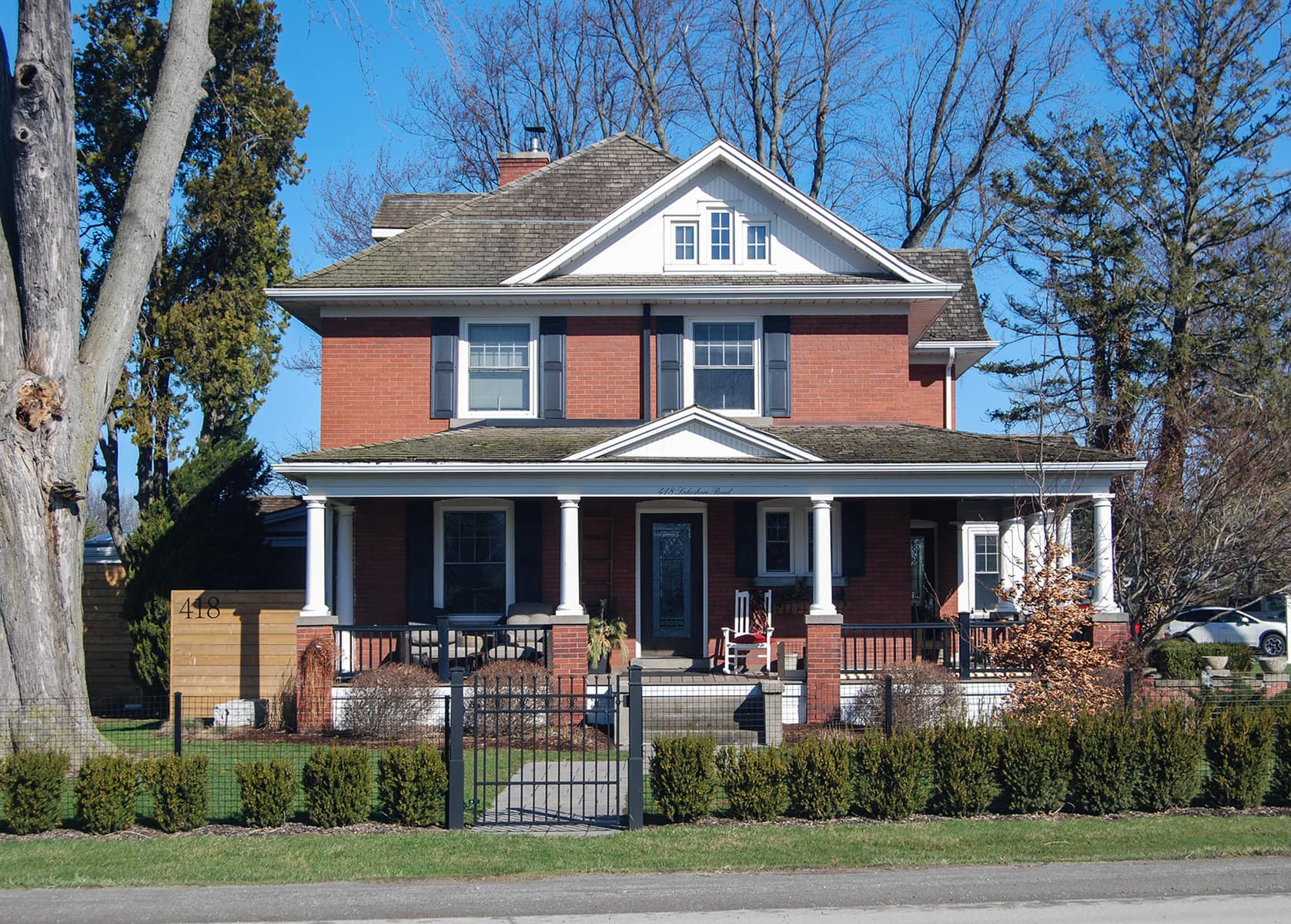On and off over the last eight weeks, we have explored a number of 19th and early 20th-century architectural styles that contributed to the evolution of Niagara-on-the-Lake’s existing built heritage.
As regular Arch-i-text readers may have noted, there was one over-arching commonality: from Georgian to Eclectic, all of these styles had “come from away.”
And, while some buildings might express a few local design influences, each and all conformed to generally accepted parameters of the style.
But in the last years of the 19th century, that was about to change. Architects in this country took to filtering international trends through period prevalent Canadian socio-political imperatives and arrived at a unique expression of Edwardian Classicism.
So, what were these trends that Canadian architects sunk their teeth into?
In Europe during the latter part of the 19th century, there was growing disaffection with what was seen as the excesses of high society. This general disaffection spurred new intellectual and artistic thought.
In England, architects responded with two main and divergent schools of design, the first being Arts & Crafts, while the second was a return to classicism (principally English baroque).
At the same time in France, the School of Fine Arts, a leading art school rooted in formal classical tradition, was focused on developing a new functional expression of classicism ornamented by integrating elements drawn from Renaissance, Greek and Roman architecture.
It wasn’t very long before the freedom of artistic creativity inherent in the French Beaux Arts classicism architecture penetrated the English architectural community who felt unnecessarily restricted by the baroque revival.
The United States, with a population predisposed to classical architecture they associated with American ideals, embraced the Beaux Arts style with a passion and architects, led by notables such as Richard Morris Hunt and H.H. Richardson, generated designs for large public buildings and private homes alike.
Despite a history in which English and American architectural styles had a significant impact, a deeply conservative Canadian society saw Beaux Arts designs as more grandiose than grand and its acceptance in Canada’s evolving built landscape was limited to a few public buildings and the occasional summer home built for an American.
That said, there was an undeniable appeal to the style amongst many Canadian architects. Their challenge was how to re-interpret the expression in a fashion that would resonate with prevailing social mores and taste.
Initially, they drew upon the two-storey, hipped roof, cubic building form that the Regency style had made familiar across the landscape decades before.
Like the Regency, this new expression would be symmetrical with three ranked bays on the facade and would boast tall, balanced chimneys.
Finally, in nearly every case, a distinctive dormer was placed on the roof directly above the central bay.
The main entry was a prominent statement, often set within a surround that included side and transom lights.
An expansive single storey porch (or verandah), that commonly spanned the entire width of the house and frequently wrapped around one or both side walls, dominated the facade.
Invariably, the porch would display classical elements such as Tuscan or Ionic columns and a built-up entablature which was frequently set with modillions.
All in all, they arrived at a less complicated version of the classical house, in an accepted traditional building form, that displayed elegantly simplified English and Beaux Arts influences.
It was an immediate hit and became one of the most popular building styles in the first three decades of the 20th century.
In short order, upscale versions of this style with the main entry set in a projecting frontispiece were built for the more affluent. Stained glass and/or hexagonal paned windows were introduced as decorative elements.
A front-gabled roof, asymmetrical version with a rectangular footprint was developed. Initially designed to fit on narrow urban lots, this variant quickly became popular in a broad range of settings.
Early in the 20th century, the asymmetrical facade treatment evidenced on the front-gabled expression could be regularly found displayed on houses designed on the original cubic form footprint.
Niagara-on-the-Lake has its fair share of homes in the style of Edwardian Classicism.
One of the finest surviving Edwardian porches in town can be found on the circa 1914 home located at 418 Lakeshore Rd..
Running the full width of the dwelling’s asymmetrical facade, the porch continues by wrapping down one side wall to a substantial two storey projecting bay. The home exudes the gracious charm of the early 1900s.
Over in St. Davids at 1360 York Rd. is another asymmetrical Edwardian example.
In this instance, the full width porch on the circa 1906 home has, at some point, had its original columns replaced with wrought iron supports however, the pedimented roof with full entablature still proclaims classicism.
Another special feature on this house is the through-eave front dormer that seamlessly merges into the porch roof.
At 14726 Niagara River Pkwy. stands a circa 1918 home which illustrates the original Edwardian two-storey, hipped roof, cubic building form with a symmetrical three-bay ranked facade.
Although there have clearly been alterations made to the roof of its full width porch, the understated dignity of the Canadian Edwardian Classicism style remains completely intact.
Edwardians can be found in Old Town, each of the old villages, and across our rural landscape. They have a character that’s hard to mistake.
That said, there is a local vernacular interpretation of the Edwardian style that is somewhat curious and each of the four houses bear the hallmarks of having been designed or constructed by the same builder.
They are symmetrical with ranked bays, possess a central gable dormer, rise to two storeys with a hip roof and are clad in stucco.
All date to the early 20th century and are found on rural properties. Some retain their full width porch while others simply bear evidence of it once having been there.
But here is the unique feature of these houses – while they are generally cubic form, the stuccoed walls of the second storey actually slope inward as they ascend to the roof creating almost a mansard-like impression.
If you’re driving on Four Mile Creek Road, one of these unique homes is located at #950. But, keep your eyes open for them on the rural byways … they’re worth spotting.
Brian Marshall is a NOTL realtor, author and expert consultant on architectural design, restoration and heritage.










